John Paul Jones House Museum and Garden
Introduction
Text-to-speech Audio
Images
The John Paul Jones House features Georgian architecture and a gambrel roof.
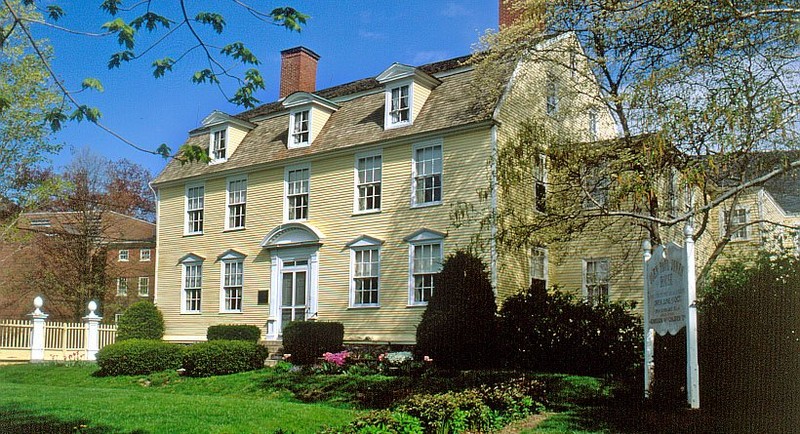
A volunteer with the Portsmouth Historical Society works on the house's garden.
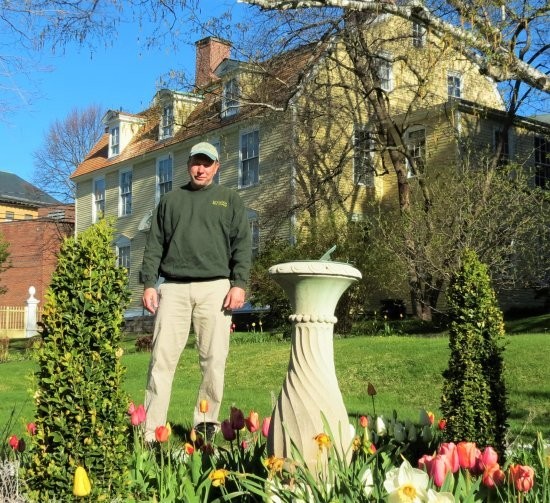
The house's central hallway and staircase.
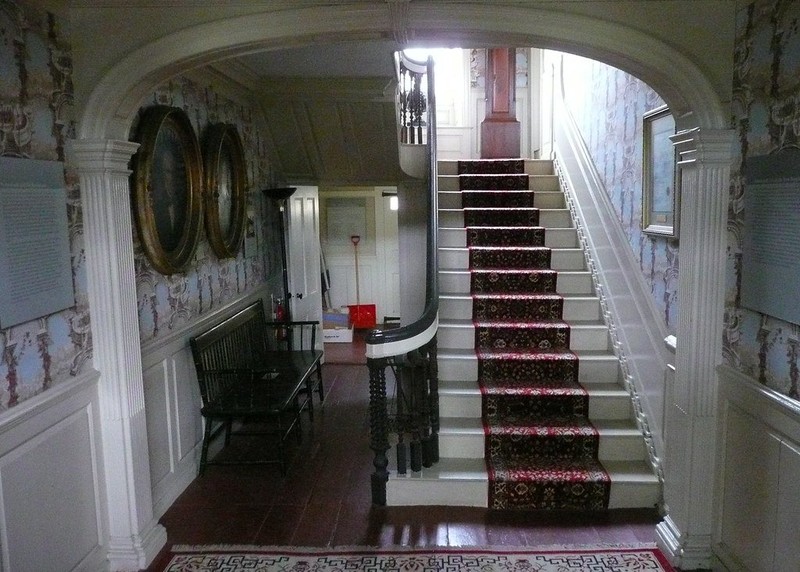
The house's first floor dining room has been restored to its early 19th century appearance.
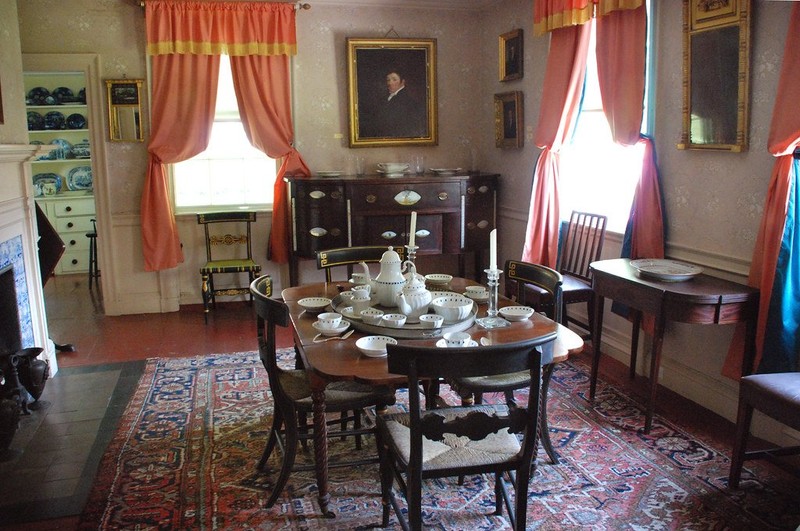
The "Father of the American Navy," John Paul Jones.

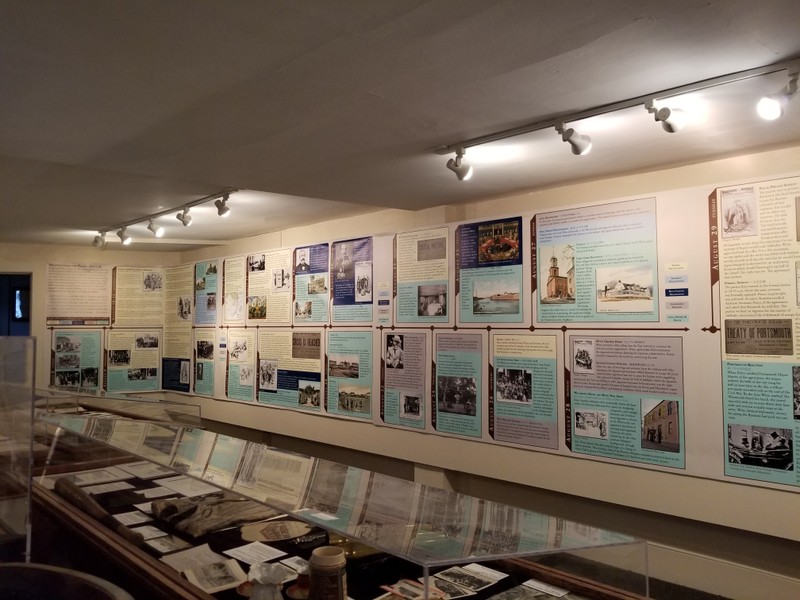
Baron Komura chair from Treaty negotiations
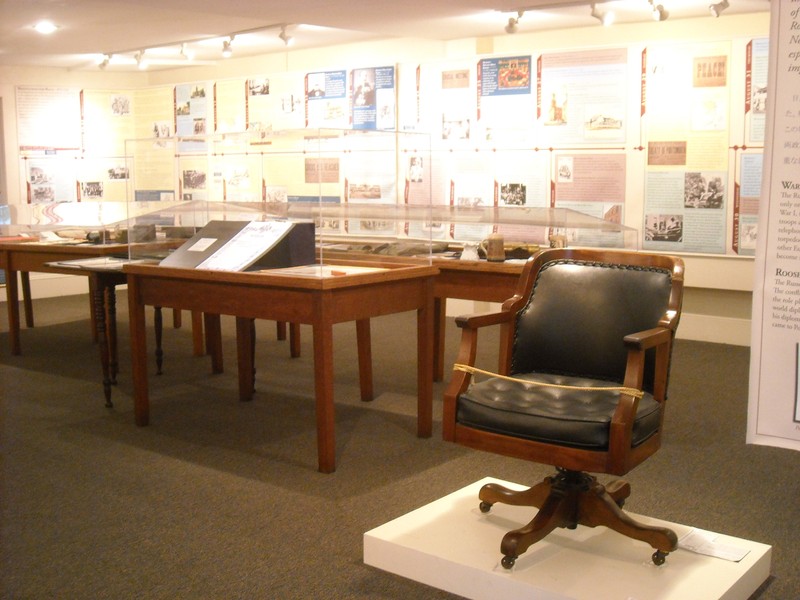
Backstory and Context
Text-to-speech Audio
In 1758, mariner Gregory Purcell commissioned one of the few African-American master housewrights in Portsmouth, Hopestill Cheswell, to construct a 2.5-story Georgian home on, what was then, the outskirts of the town. Hopestill, father of African-American patriot, Wentworth Cheswell, built the home with a gambrel roof and symmetrical five-bay fronts with a typical central hallway and staircase with two rooms on either side. The first floor was comprised of a front parlor, dining room, kitchen and counting room or office. The second floor contained four bedrooms with the one temporarily occupied by John Paul Jones on the southeast corner. The third floor had an additional five rooms. A two-story addition was constructed in the early 19th century.
Captain Purcell died in 1776 and his widow, Sarah, then took in boarders until her death in 1783. One of the boarders that stayed in her home from August of 1781 through late 1782 was infamous and famous American naval officer, John Paul Jones. Jones had previously spent some time in Portsmouth in 1776-77, but it is unknown where he resided during that time.
Jones was born in Scotland in 1747 and became a sailor at age 13. He visited his older brother in Fredericksburg, Virginia on his early voyages. Jones eventually came to serve as third and first mates on slave ships and became captain of an English merchant ship. After killing one of his crew in 1773, he fled to the colonies and added “Jones” to his name in order to escape the English authorities. At the start of the Revolutionary War, he became acquainted with Joseph Hewes and Robert Morris, both who were interested in naval affairs and was commissioned a lieutenant at the end of 1775.
Jones helped fit out the Alfred, the first ship procured by the Continental Congress, and was given command of the Providence in 1776. In October of 1776, he arrived in Portsmouth to oversee the construction of the Ranger and took command of her in June of 1777. He then spent the next three years in France and raiding along the English, Scottish and European coasts. He arrived back in Philadelphia in 1780 and then traveled to Portsmouth to supervise the construction of another ship, America, in August of 1781 and took command of her upon completion in late 1782. After serving a time in the Russian navy, he died in Paris in 1792 and his remains were finally returned to the Naval Academy at Annapolis, Maryland in 1913. Today, the home where Jones resided for over a year is owned by the Portsmouth Historical Society and operated as a historic house museum. The society has also restored the home’s famous gardens that were first grown by Samuel Lord in the mid-19th century.
Sources
Snell, Charles. "National Register of Historic Places Nomination Form." United States Department of the Interior/National Park Service. February 14, 1972. Accessed May 13, 2019. https://npgallery.nps.gov/NRHP/GetAsset/NHLS/72000084_text
"John Paul Jones House and Garden." Discover Portsmouth. Accessed May 13, 2019. http://portsmouthhistory.org/about-john-paul-jones/john-paul-jones-house-and-garden-2/
Strahan, Derek. "John Paul Jones House, Portsmouth, NH." Lost New England. August 6, 2015. Accessed May 13, 2019. http://lostnewengland.com/2015/08/john-paul-jones-house-portsmouth-nh/
Blythe, Bob. "John Paul Jones (1747-1792)." National Park Service. Accessed May 13, 2019. https://www.nps.gov/revwar/about_the_revolution/jp_jones.html
Portsmouth Peace Treaty Forum
CB Doleac Collection
